
Teenage Engineering designed a museum exhibit
6 min read Jun 3, 2024 Updated Jun 6, 2024
I recently visited SFMOMA to experience Art of Noise. Occupying the top floor, the exhibition focuses on how the objects surrounding music — posters, music players, books — are inseparable from the music itself. The exhibition design, the work of Teenage Engineering, is by itself something worth admiring.
When I exited the elevator, I was hit by the blue color of the walls, tables, and seating across the floor. Two tall walls form the entrance, the left one featuring an animated title projection.
 Leica CL · 18mm · f/2.8 · 1/50 ·
ISO 2000
Leica CL · 18mm · f/2.8 · 1/50 ·
ISO 2000
Posters
The first section is a collection featuring hundreds of posters related to music.
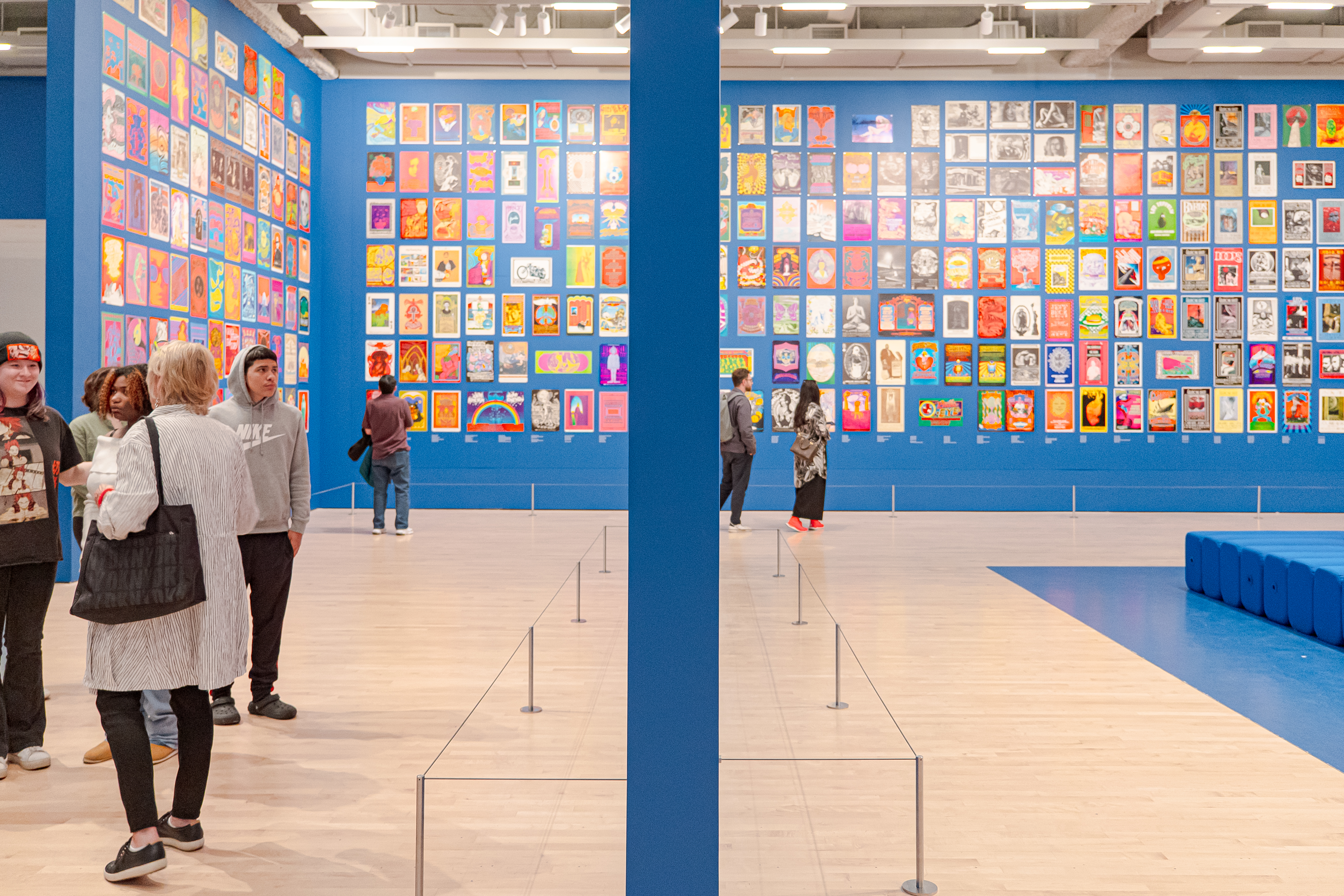 Leica CL · 18mm · f/2.8 · 1/50 ·
ISO 1250
Leica CL · 18mm · f/2.8 · 1/50 ·
ISO 1250
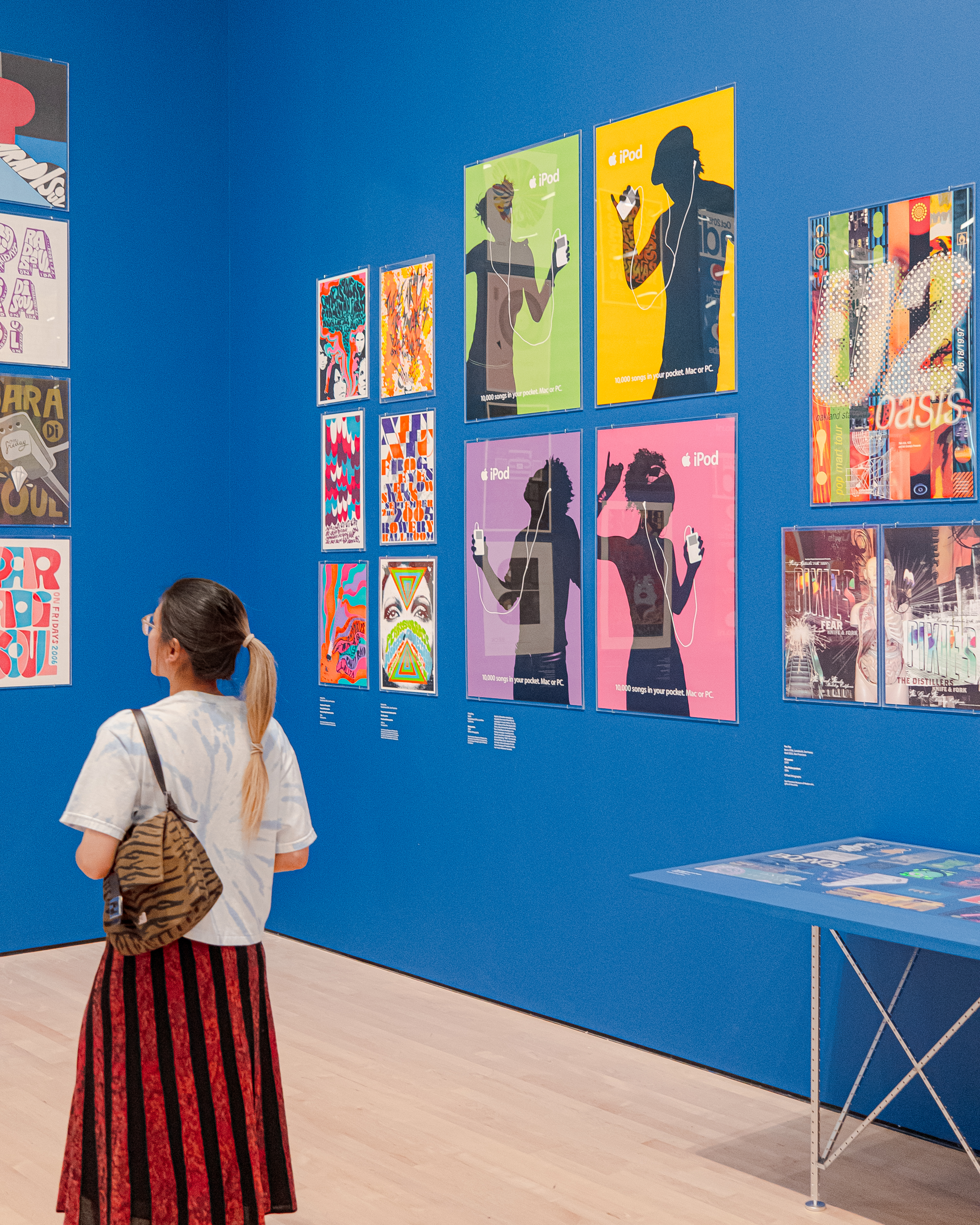 Leica CL · 26mm · f/2.8 · 1/60 ·
ISO 2500
Leica CL · 26mm · f/2.8 · 1/60 ·
ISO 2500
As a fan of modernist design, I found plenty that I photographed to look at later for inspiration.
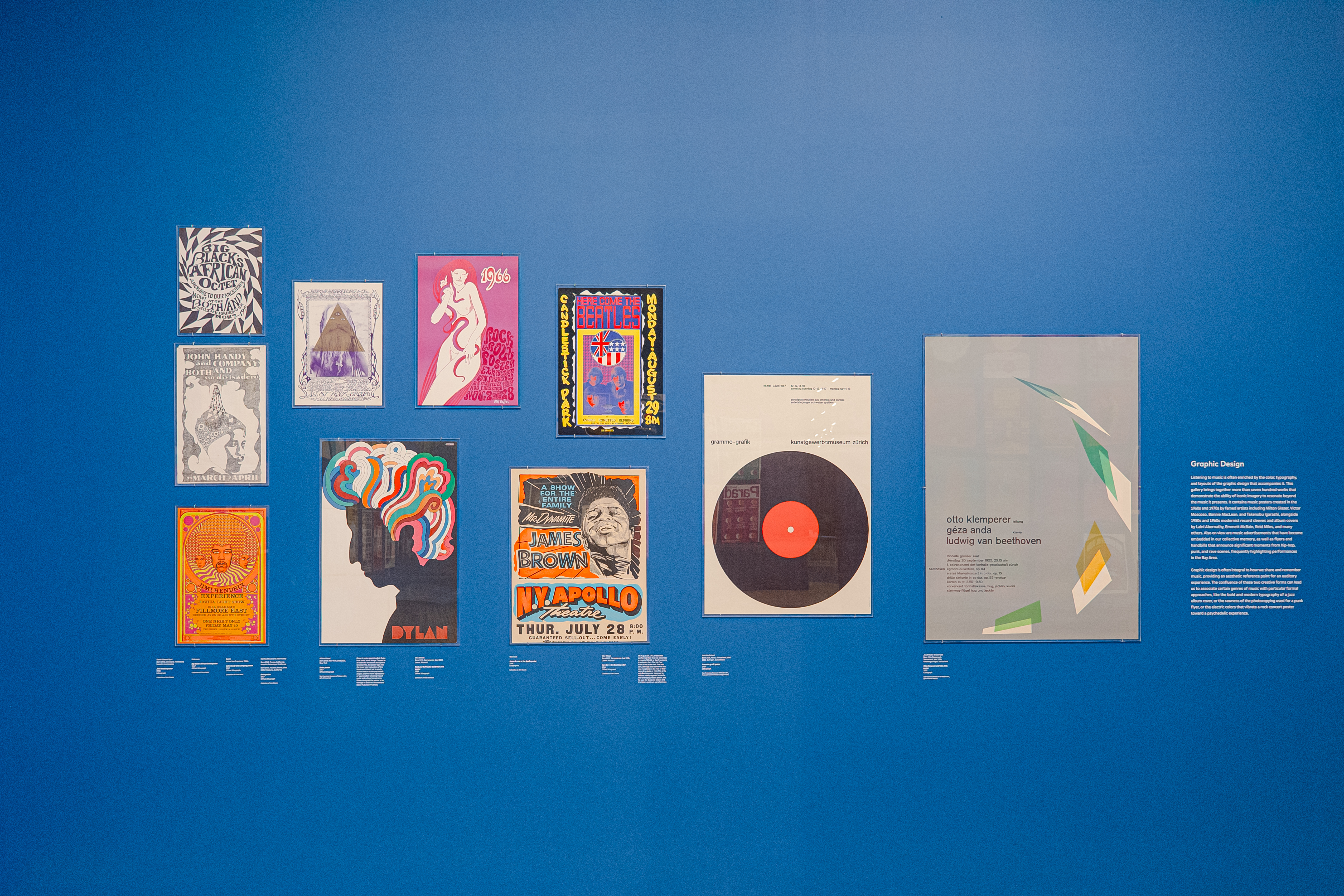 Leica CL · 18mm · f/2.8 · 1/50 ·
ISO 1250
Leica CL · 18mm · f/2.8 · 1/50 ·
ISO 1250
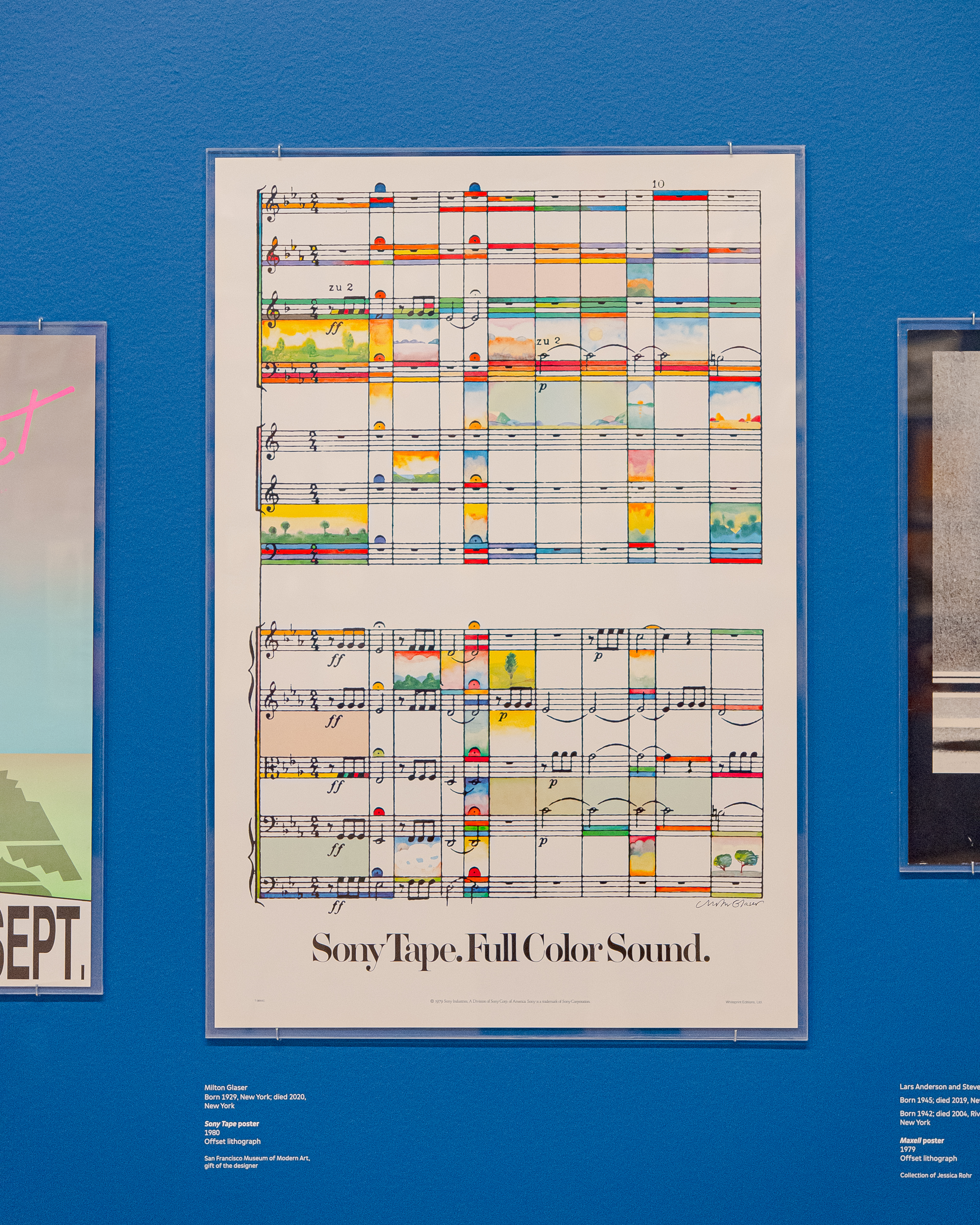 Leica CL · 50mm · f/2.8 · 1/125 ·
ISO 1600
Leica CL · 50mm · f/2.8 · 1/125 ·
ISO 1600
I appreciated the use of height and scale to visually divide the space. The floor-to-ceiling grids of posters form a divider between the outside and inside, obscuring the view of the rest of the exhibition.
 Leica CL · 19mm · f/2.8 · 1/50 ·
ISO 1250
Leica CL · 19mm · f/2.8 · 1/50 ·
ISO 1250
Lounge
Continuing in, I was met with a very low, sea-like listening lounge. A modular system of rounded rectangular cushions mimic a waveform. Short pieces act as seats, while taller ones are back rests.
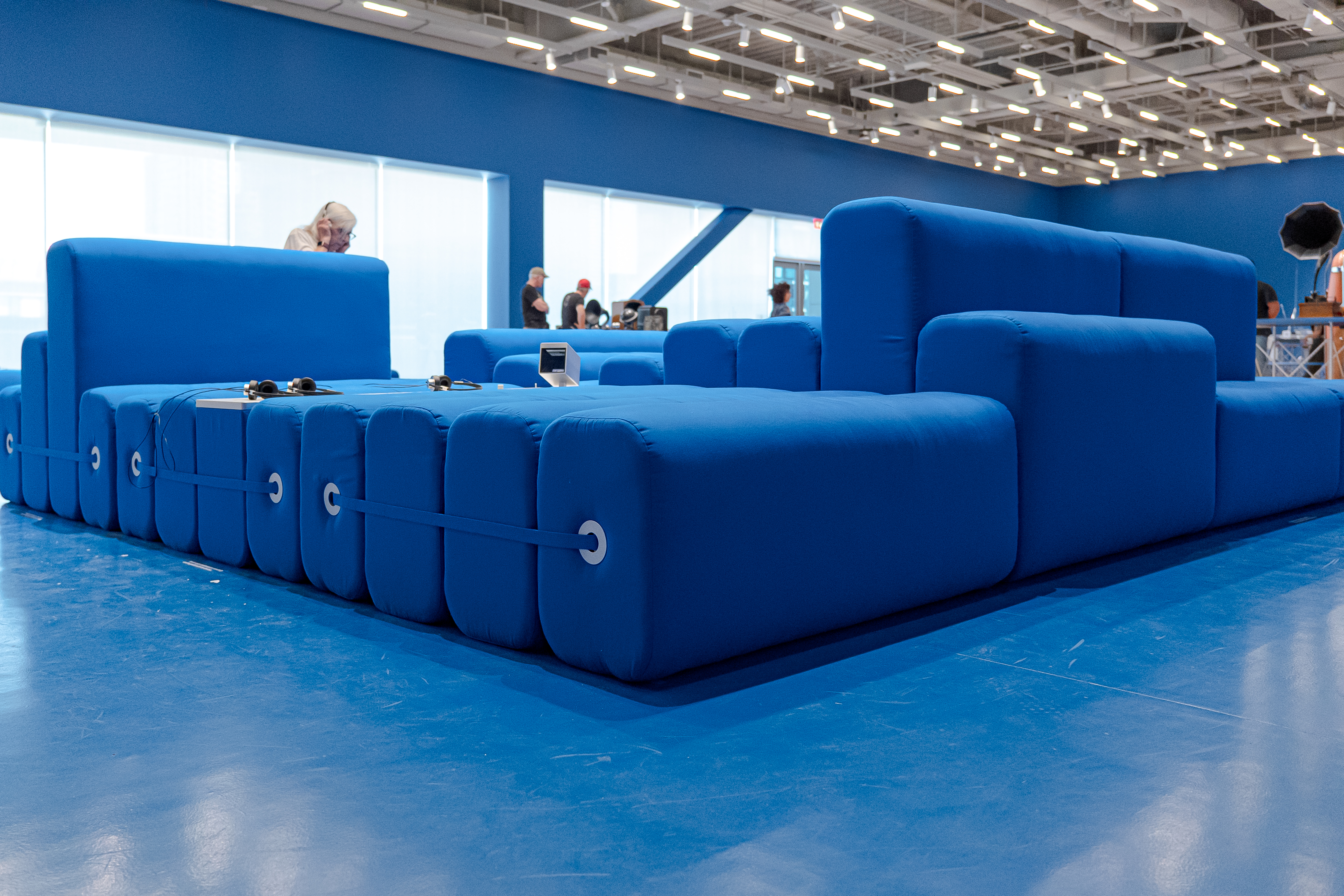 Leica CL · 18mm · f/2.8 · 1/50 ·
ISO 2000
Leica CL · 18mm · f/2.8 · 1/50 ·
ISO 2000
Embedded within the seating are long aluminum listening consoles which are quite clearly the work of Teenage Engineering. They follow the same design language of their other consoles like Brain One, which Gary Hustwit uses to generate the Eno film, the Mother of All Decks for Swedish House Mafia, and Virgil Abloh’s console from Coachella (which is on display at the exhibition).
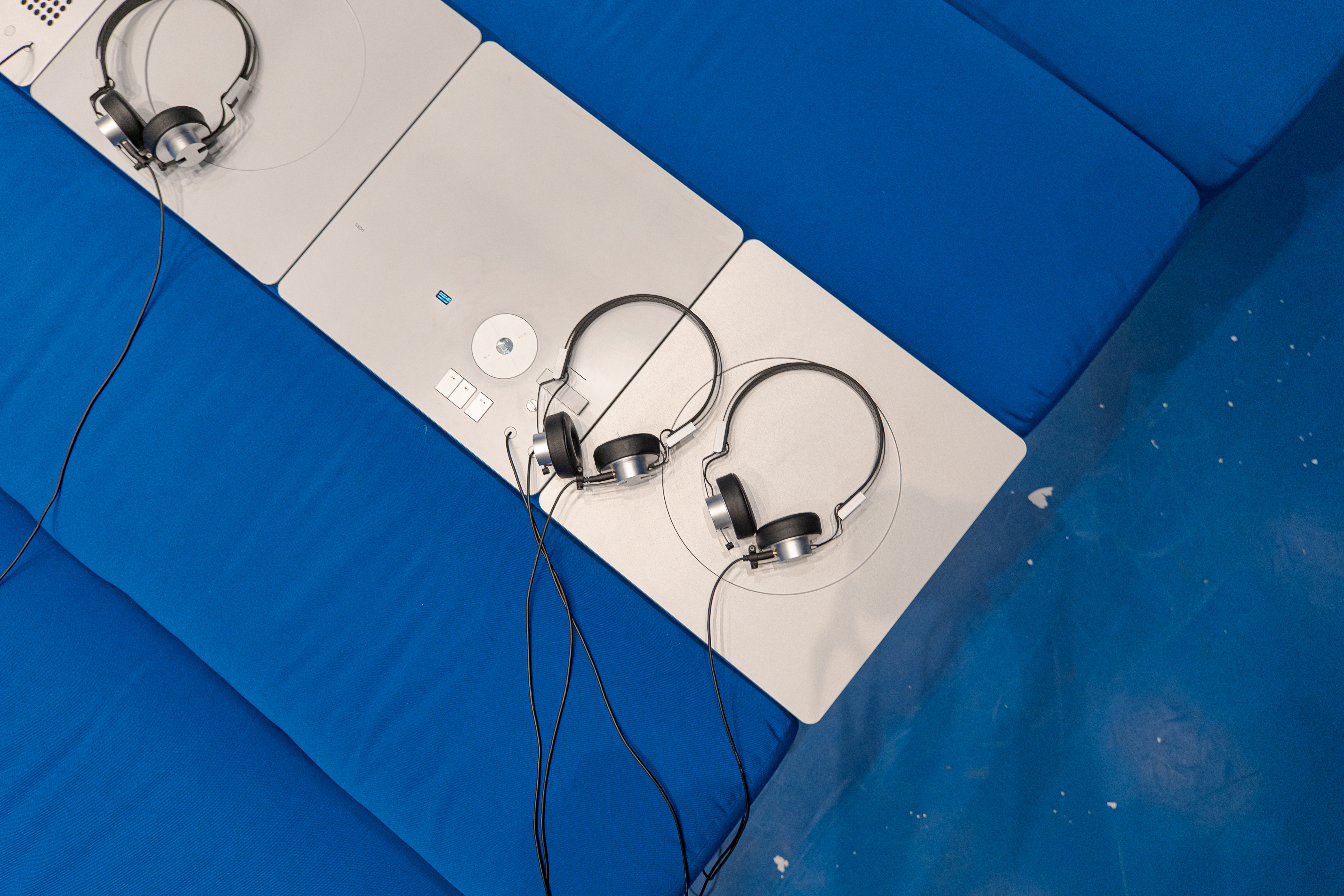 Leica CL · 18mm · f/2.8 · 1/50 ·
ISO 250
Leica CL · 18mm · f/2.8 · 1/50 ·
ISO 250
 Leica CL · 56mm · f/1.4 · 1/160 ·
ISO 800
Leica CL · 56mm · f/1.4 · 1/160 ·
ISO 800
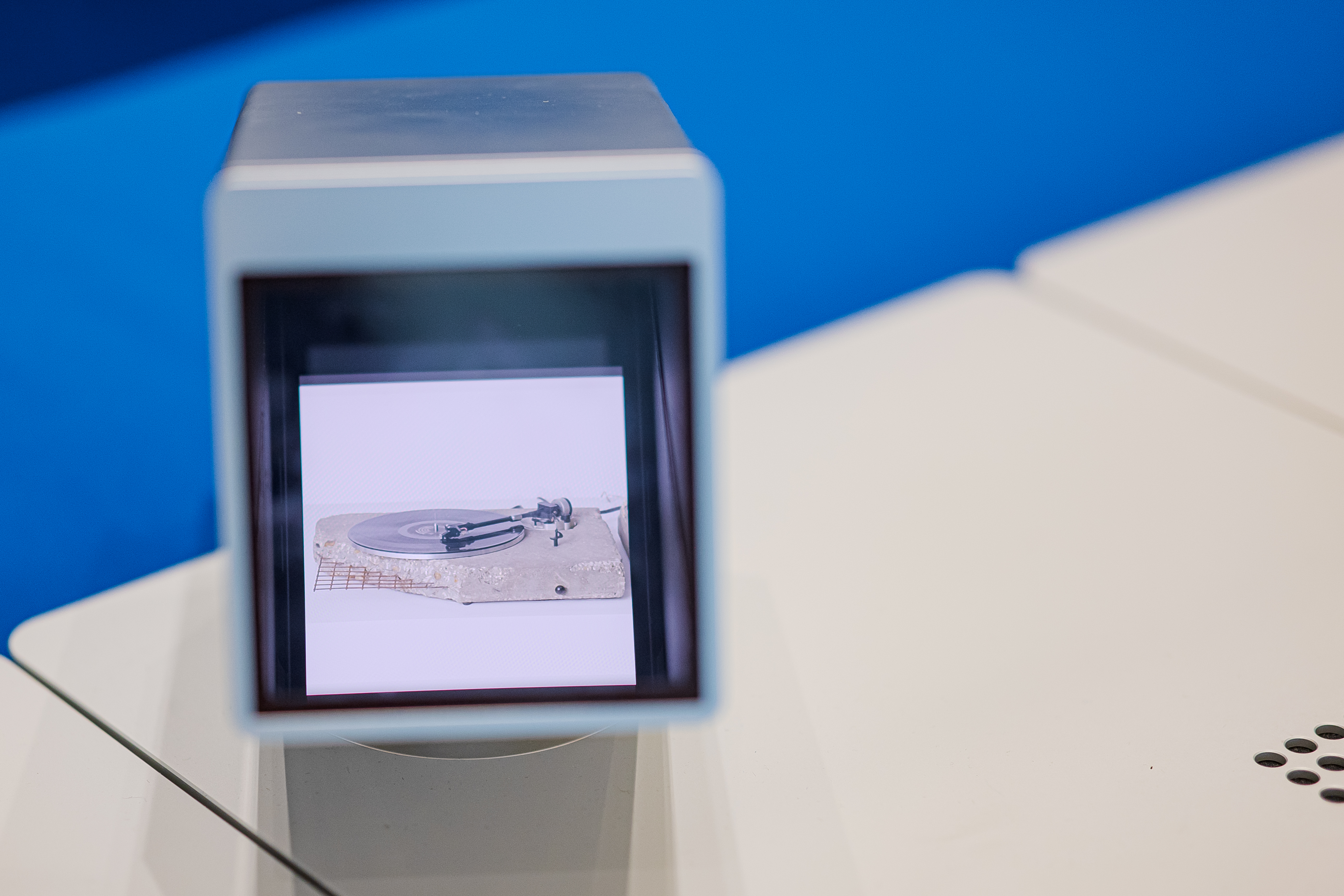 Leica CL · 56mm · f/1.4 · 1/160 ·
ISO 320
Leica CL · 56mm · f/1.4 · 1/160 ·
ISO 320
Each square-shaped module hides electronics underneath. The minimal facades are broken up by a retro-futuristic display and controls found in Teenage Engineering products like the TP-7 recorder.
 Leica CL · 50mm · f/2.8 · 1/125 ·
ISO 2000
Leica CL · 50mm · f/2.8 · 1/125 ·
ISO 2000
 Leica CL · 56mm · f/1.4 · 1/160 ·
ISO 2000
Leica CL · 56mm · f/1.4 · 1/160 ·
ISO 2000
Sound is provided by custom silver M-1 headphones.
Music players
Beyond the lounge is an array of tables at different heights housing music players and speakers from across the decades. I’m biased towards modern devices that I’ve used and seen in stores, but there were plenty from the early 20th century as well.
The blue painted wood tables are supported by pieces from the Field Desk system, a furniture system that Teenage Engineering has been iterating on for decades.
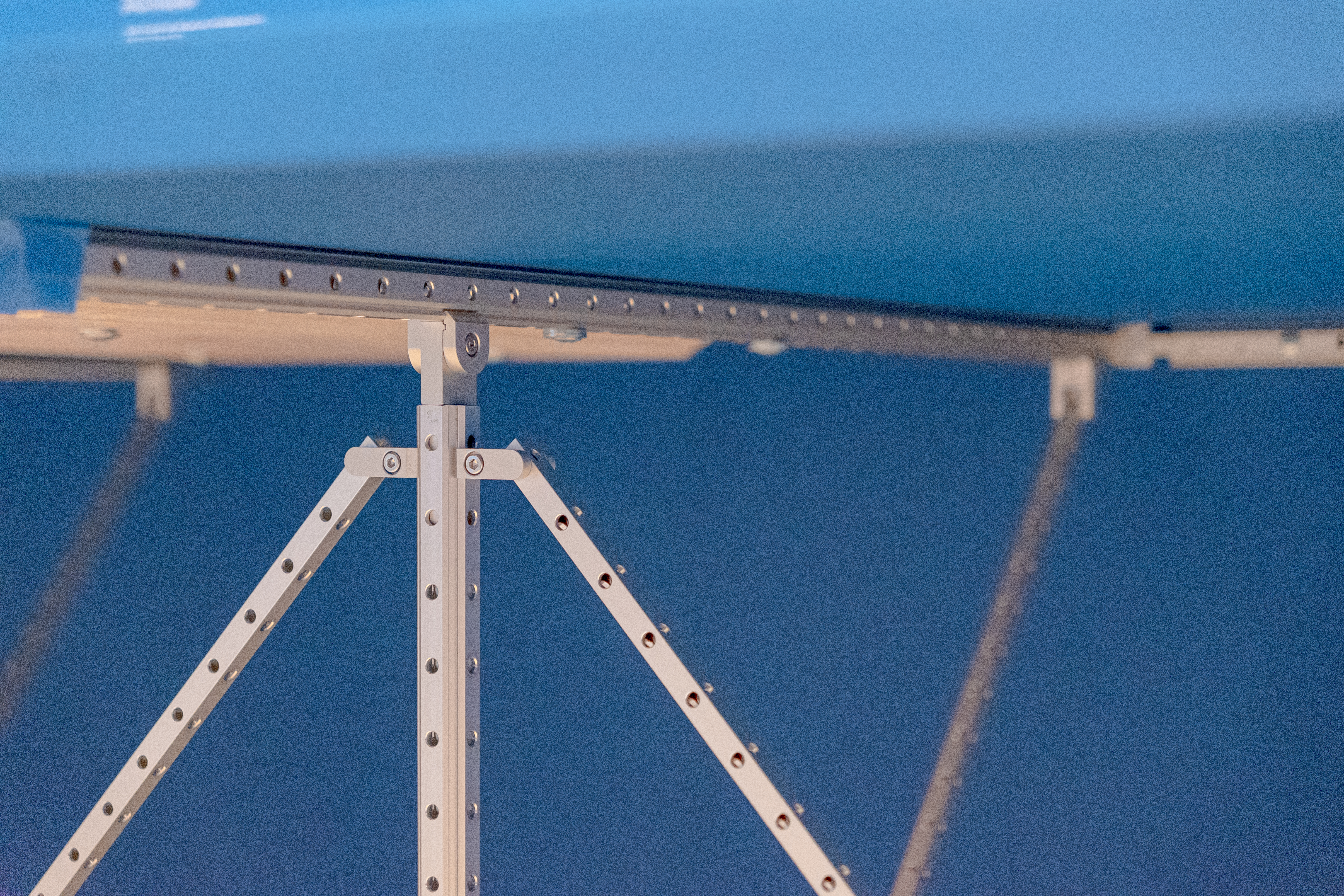 Leica CL · 46mm · f/2.8 · 1/125 ·
ISO 12500
Leica CL · 46mm · f/2.8 · 1/125 ·
ISO 12500
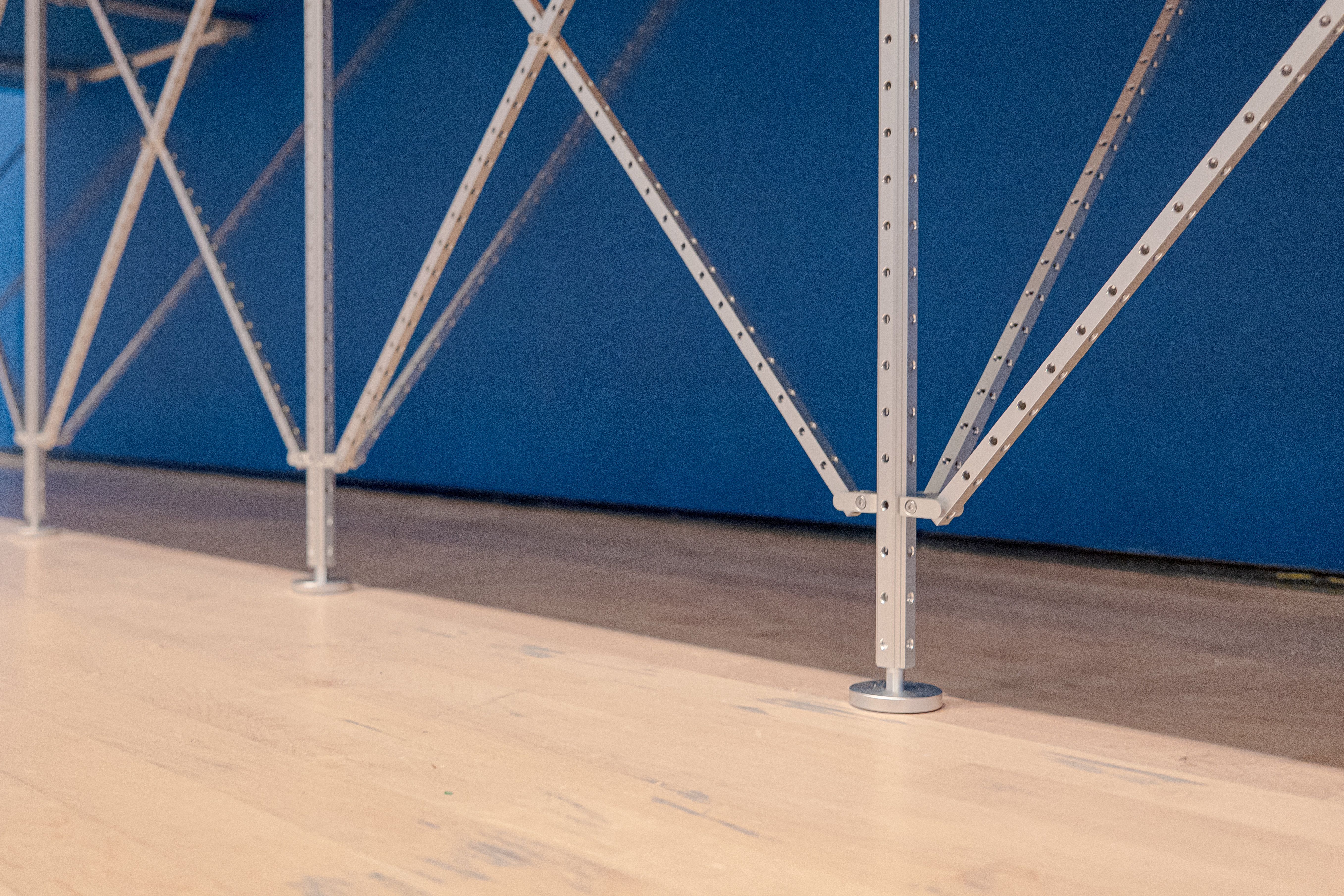 Leica CL · 24mm · f/2.8 · 1/60 ·
ISO 3200
Leica CL · 24mm · f/2.8 · 1/60 ·
ISO 3200
 Leica CL · 56mm · f/1.4 · 1/160 ·
ISO 800
Leica CL · 56mm · f/1.4 · 1/160 ·
ISO 800
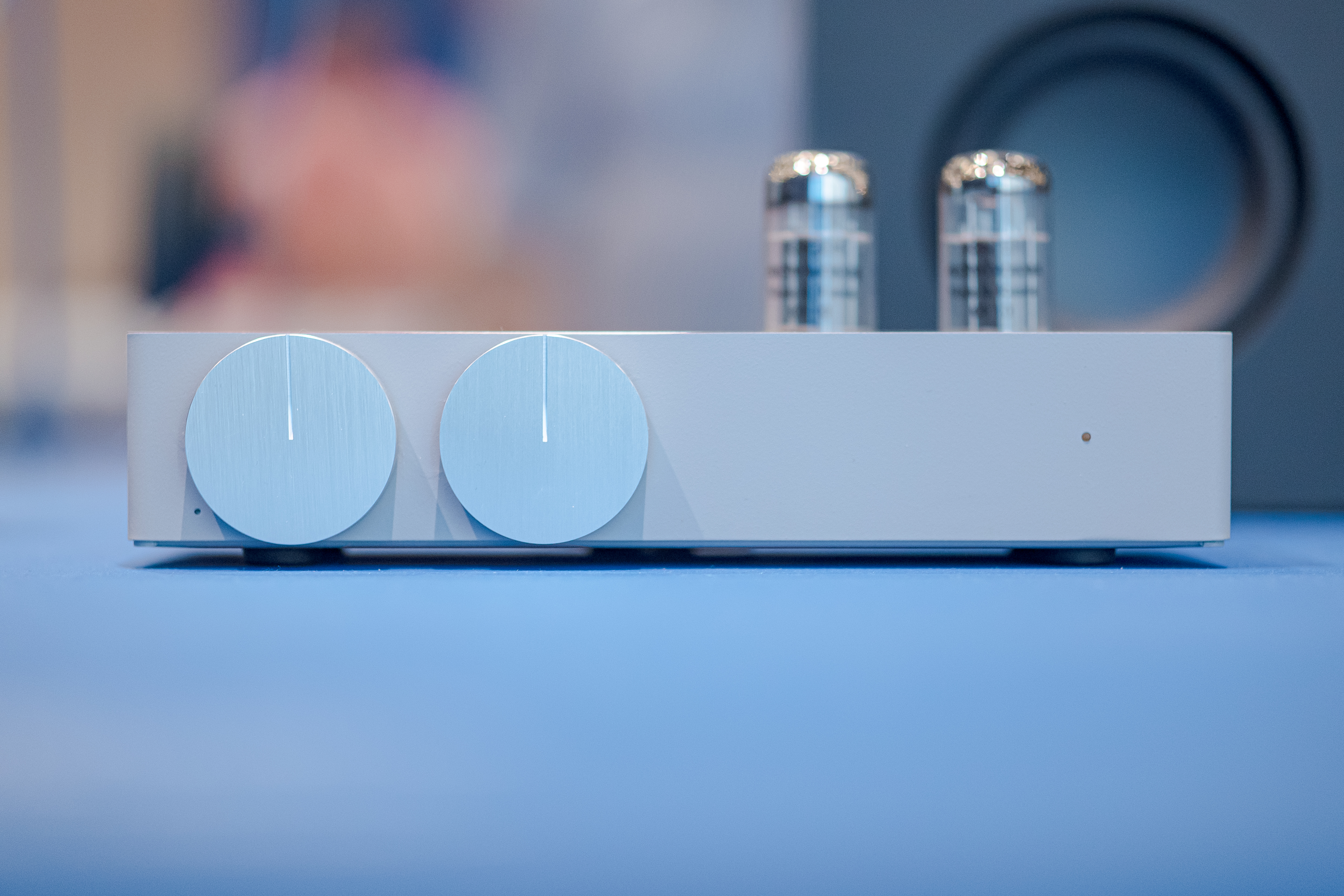 Leica CL · 56mm · f/1.4 · 1/160 ·
ISO 800
Leica CL · 56mm · f/1.4 · 1/160 ·
ISO 800
 Leica CL · 56mm · f/1.4 · 1/160 ·
ISO 1000
Leica CL · 56mm · f/1.4 · 1/160 ·
ISO 1000
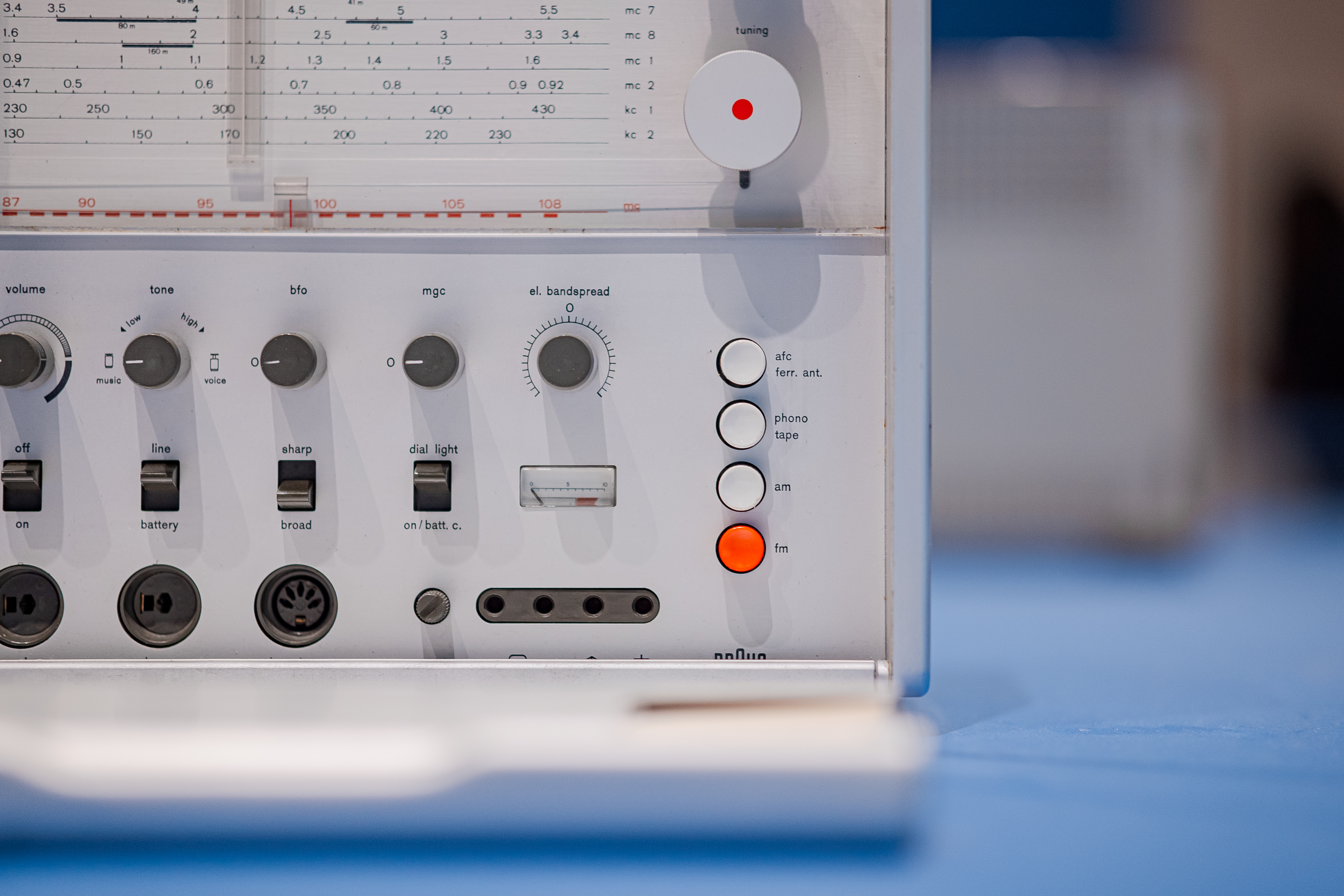 Leica CL · 56mm · f/1.4 · 1/160 ·
ISO 500
Leica CL · 56mm · f/1.4 · 1/160 ·
ISO 500
 Leica CL · 56mm · f/1.4 · 1/160 ·
ISO 800
Leica CL · 56mm · f/1.4 · 1/160 ·
ISO 800
Some of the pieces are rare works of art, such as Ron Arad’s Concrete Stereo.
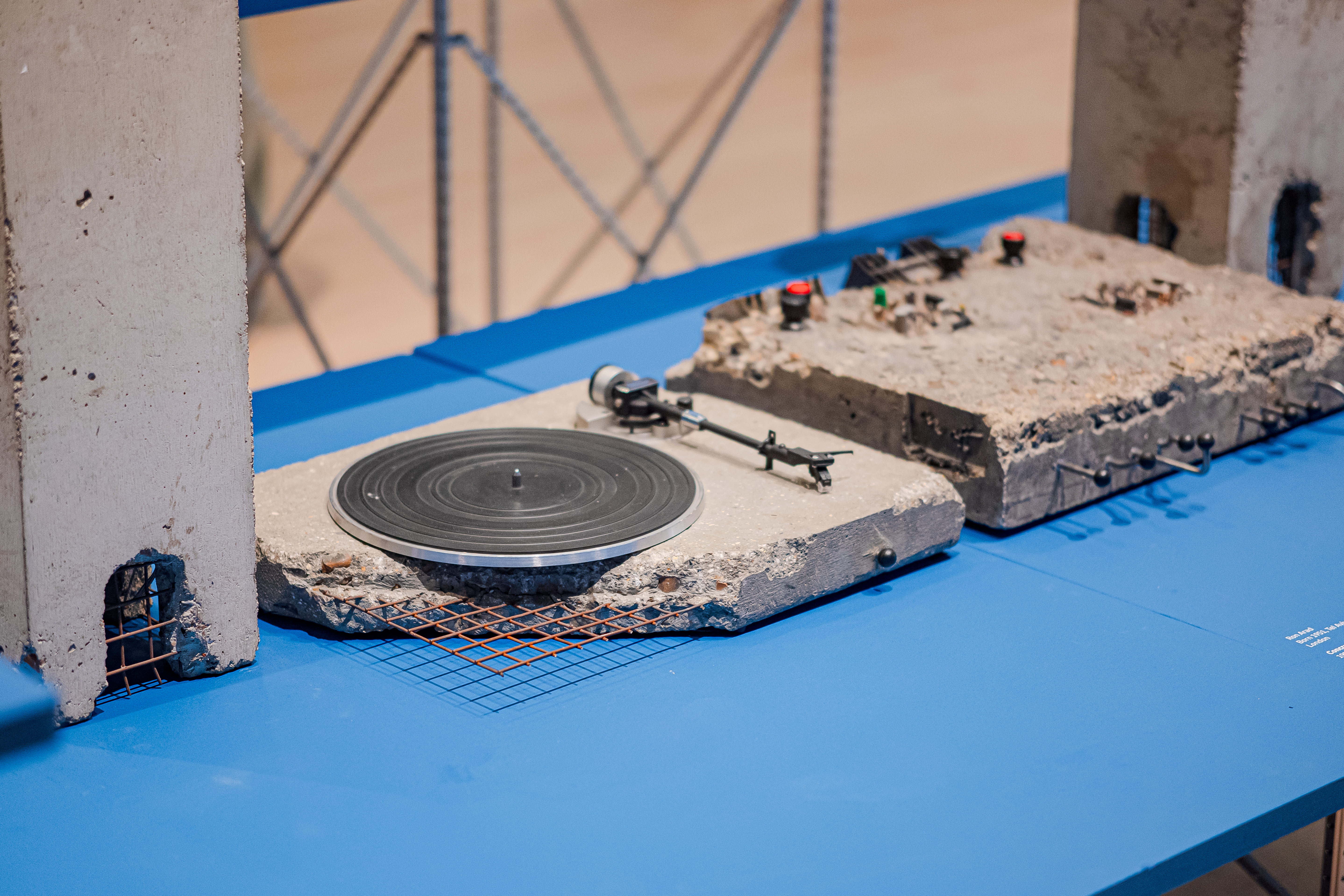 Leica CL · 56mm · f/1.4 · 1/160 ·
ISO 1250
Leica CL · 56mm · f/1.4 · 1/160 ·
ISO 1250
Others are among the most popular consumer electronics of all time, like the Walkman and iPod.
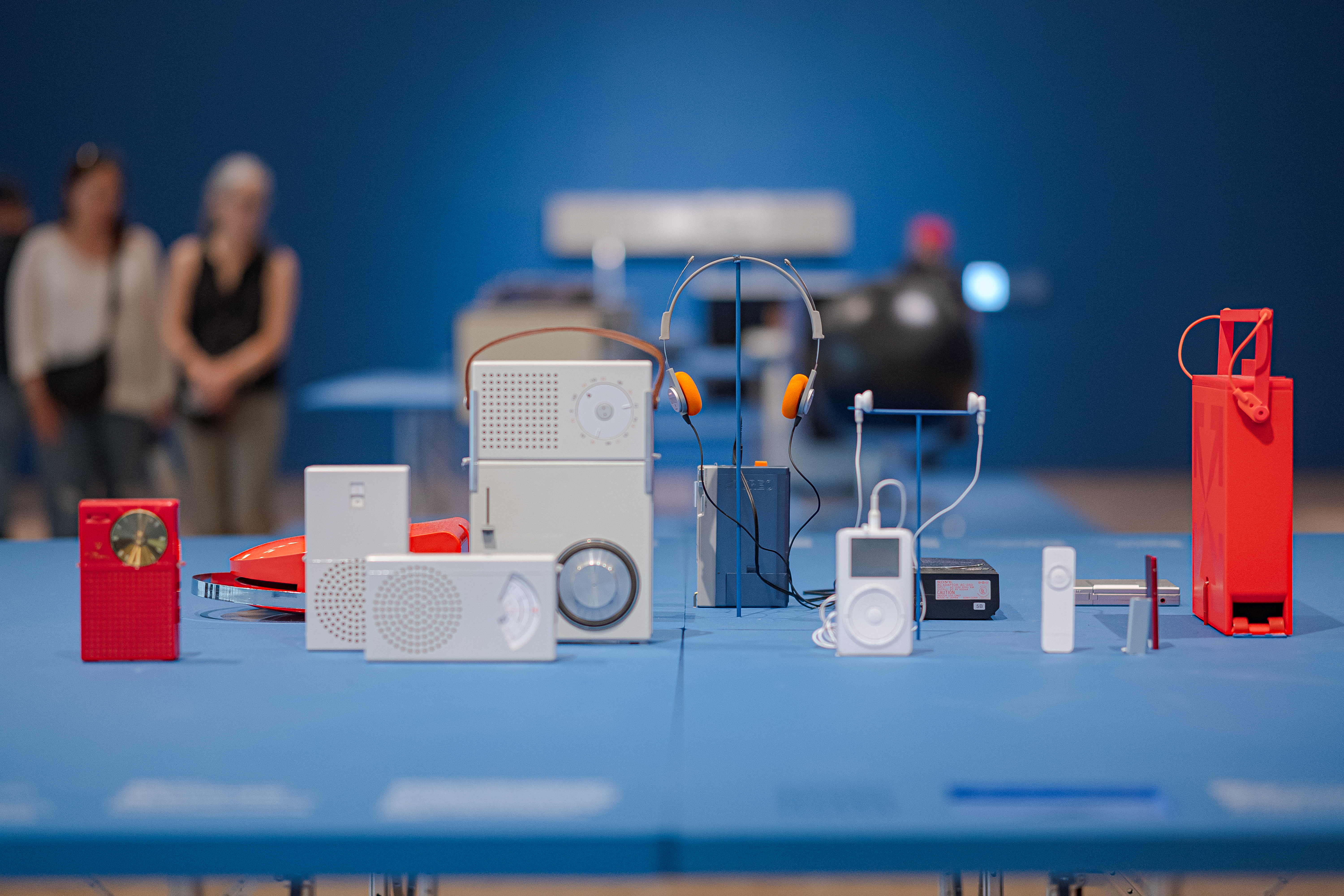 Leica CL · 56mm · f/1.4 · 1/160 ·
ISO 800
Leica CL · 56mm · f/1.4 · 1/160 ·
ISO 800
I loved the chance to finally see in the flesh the Brionvega Radiofonografo. It’s a favorite among design lovers (Jony Ive has one at home).
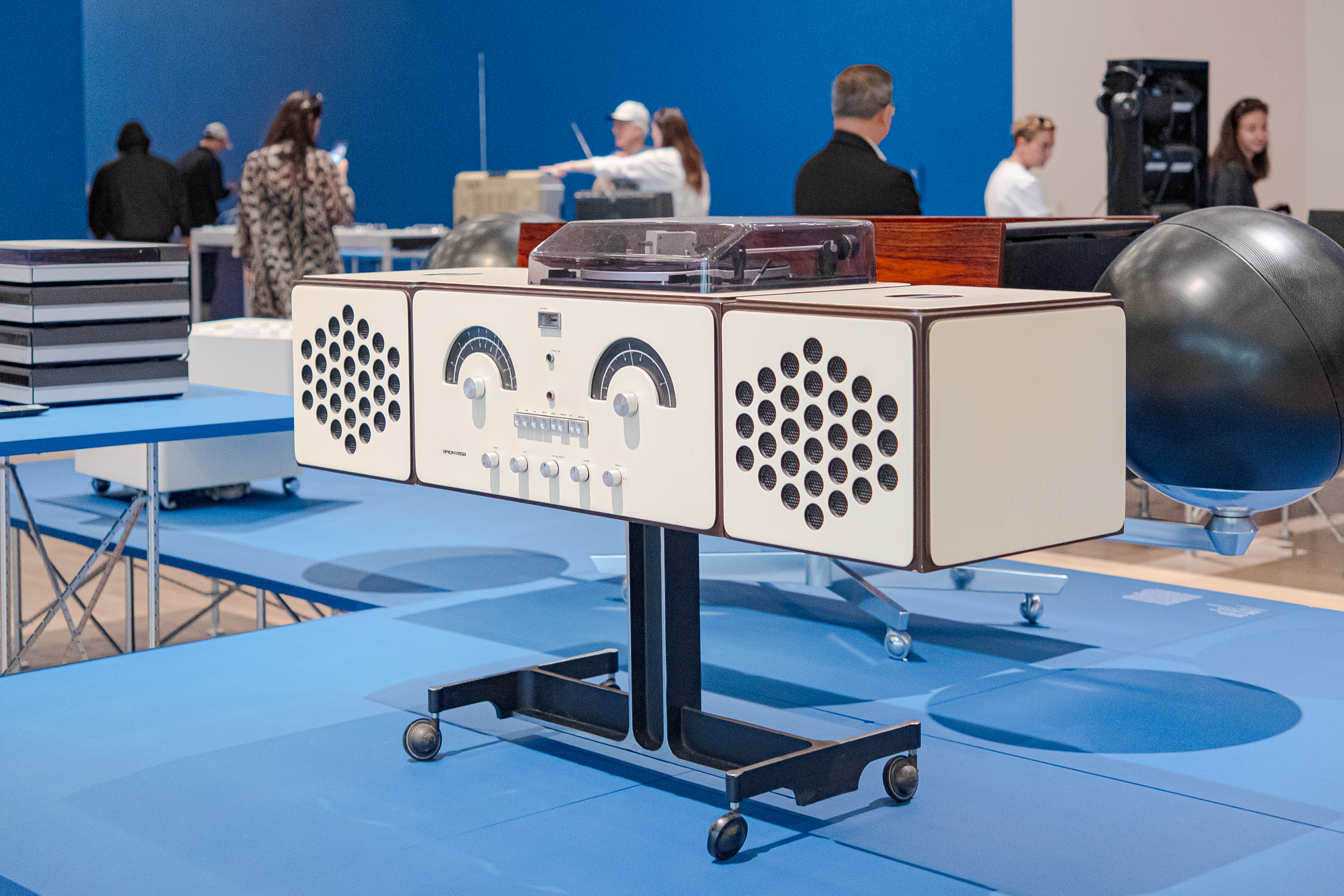 Leica CL · 32mm · f/2.8 · 1/80 ·
ISO 2000
Leica CL · 32mm · f/2.8 · 1/80 ·
ISO 2000
Select music players were accompanied by displays embedded in the table playing videos and music.
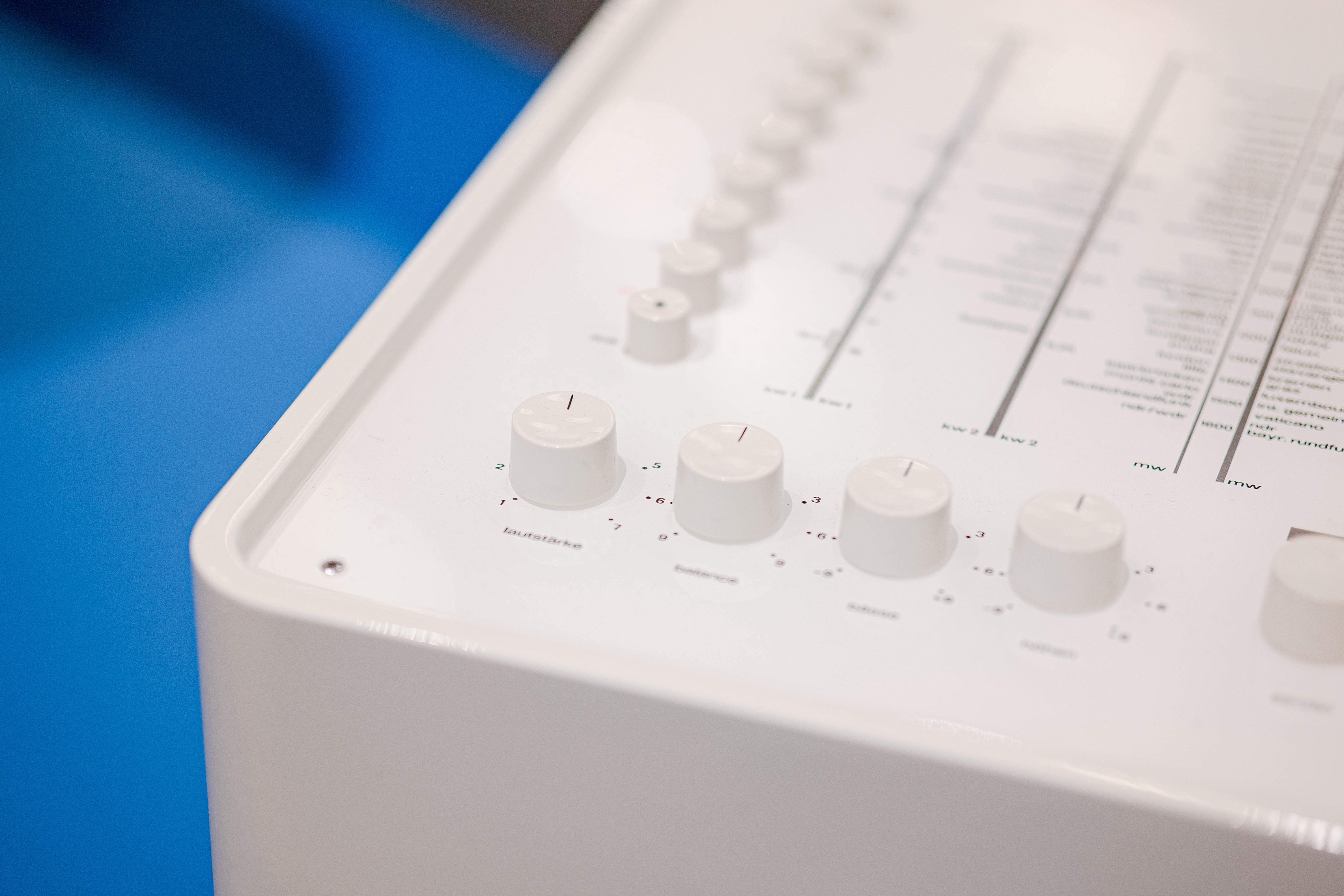 Leica CL · 56mm · f/1.4 · 1/160 ·
ISO 200
Leica CL · 56mm · f/1.4 · 1/160 ·
ISO 200
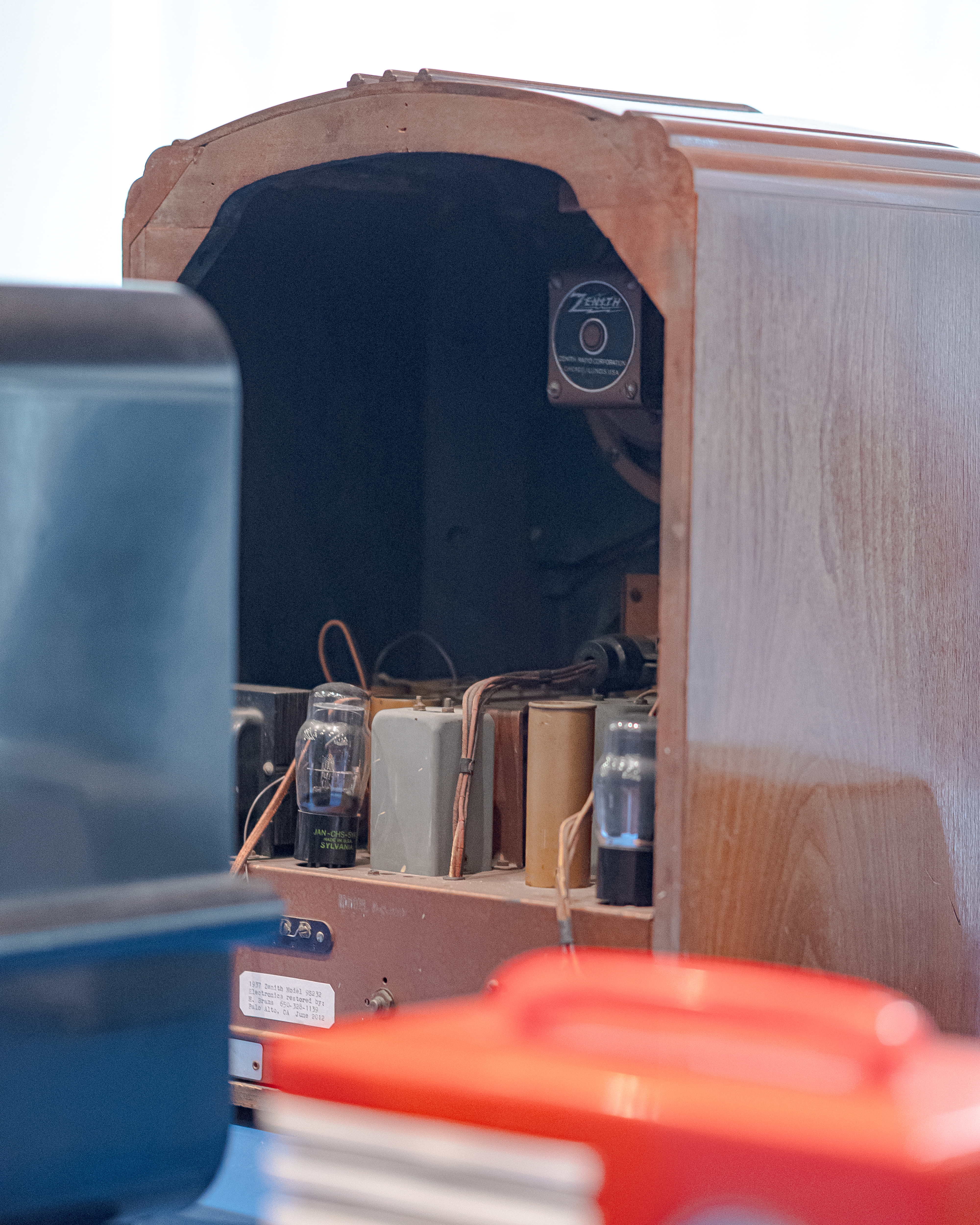 Leica CL · 56mm · f/1.4 · 1/160 ·
ISO 3200
Leica CL · 56mm · f/1.4 · 1/160 ·
ISO 3200
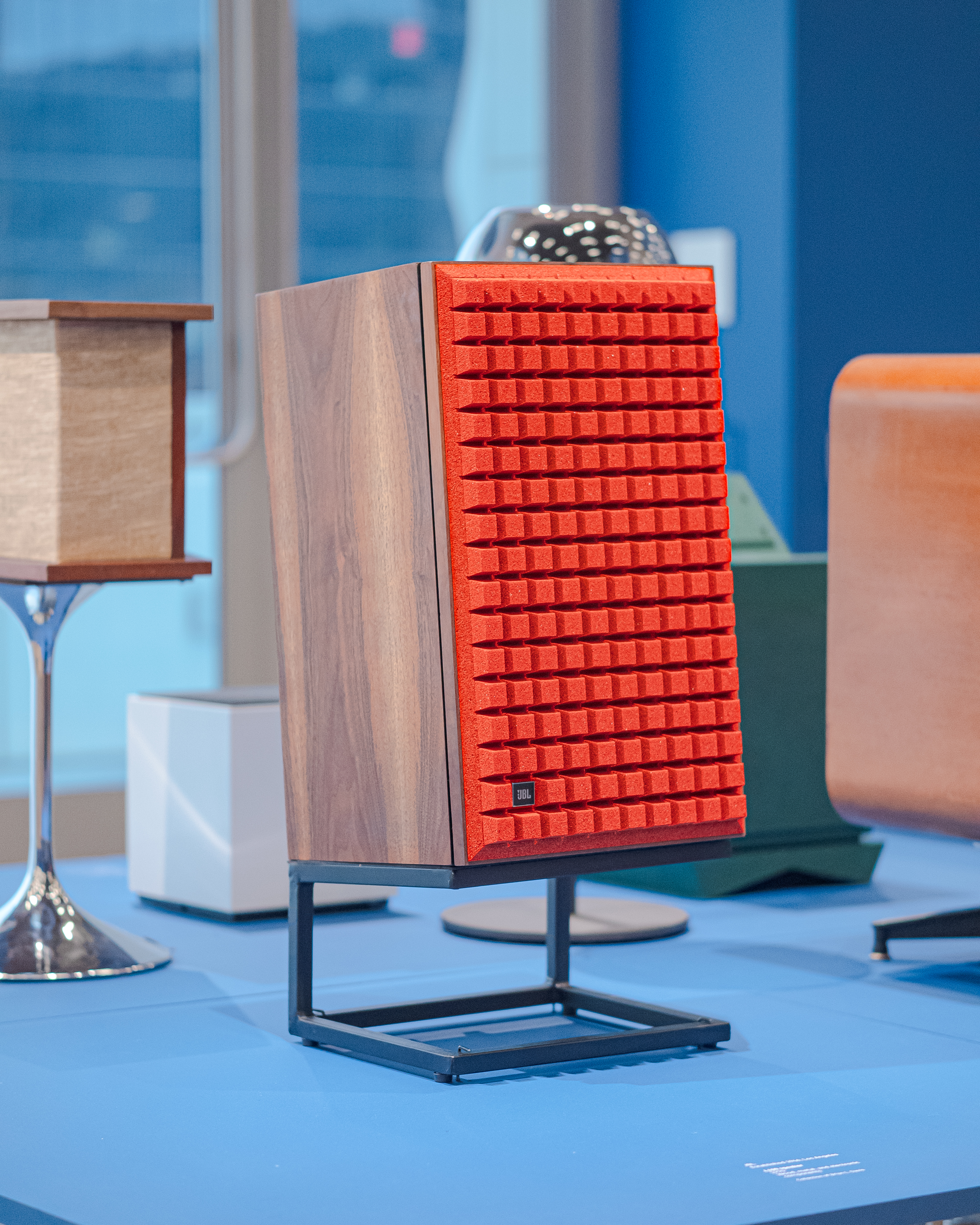 Leica CL · 56mm · f/1.4 · 1/160 ·
ISO 2000
Leica CL · 56mm · f/1.4 · 1/160 ·
ISO 2000
 Leica CL · 56mm · f/1.4 · 1/160 ·
ISO 2000
Leica CL · 56mm · f/1.4 · 1/160 ·
ISO 2000
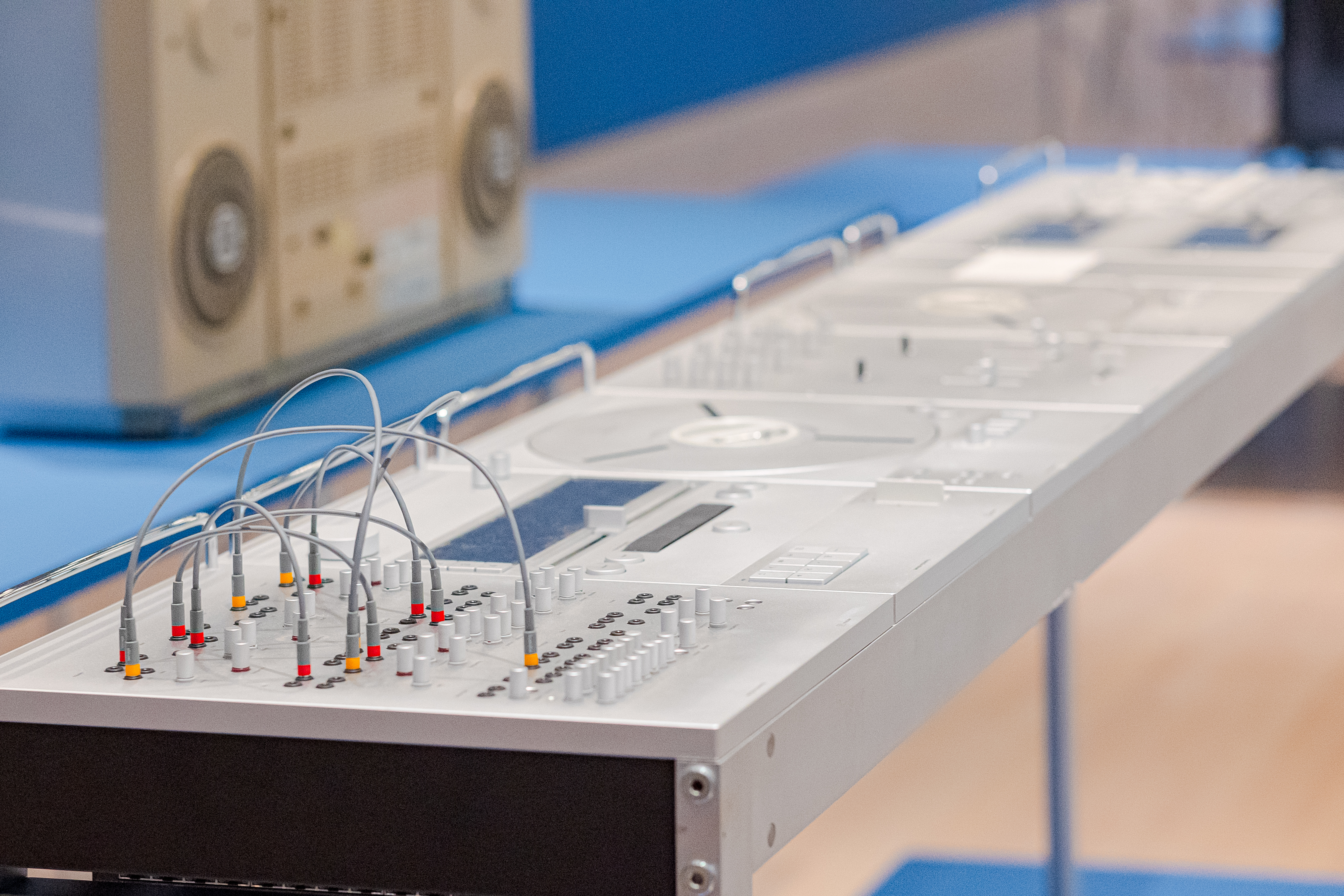 Leica CL · 56mm · f/2.5 · 1/160 ·
ISO 2500
Leica CL · 56mm · f/2.5 · 1/160 ·
ISO 2500
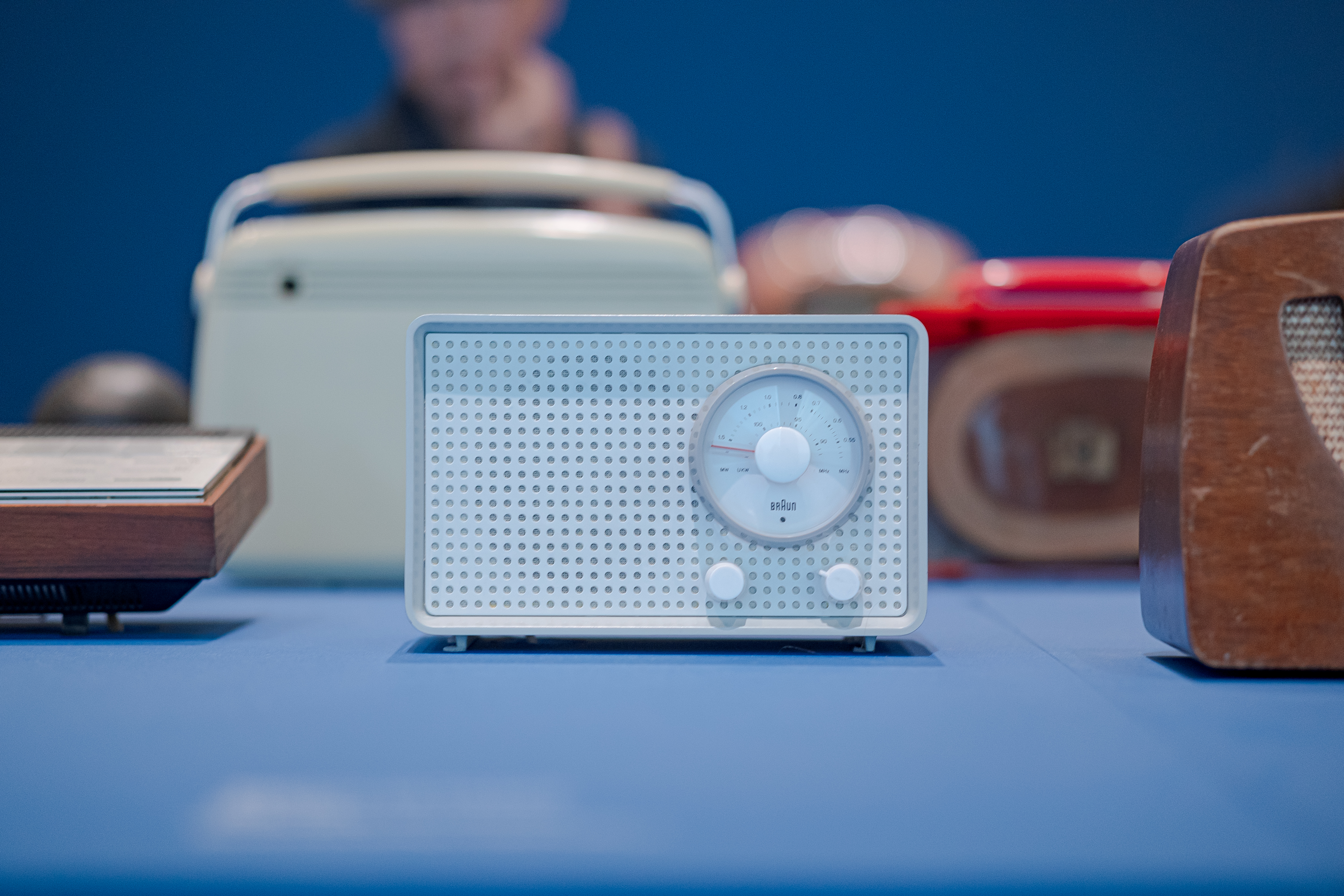 Leica CL · 56mm · f/1.4 · 1/160 ·
ISO 500
Leica CL · 56mm · f/1.4 · 1/160 ·
ISO 500
 Leica CL · 56mm · f/1.4 · 1/160 ·
ISO 3200
Leica CL · 56mm · f/1.4 · 1/160 ·
ISO 3200
Choir
Behind a wall was a dark room usually reserved for film installations. Instead of a projection or CRT TV, a low shelf housed a row of wooden dolls, Teenage Engineering’s Choir.
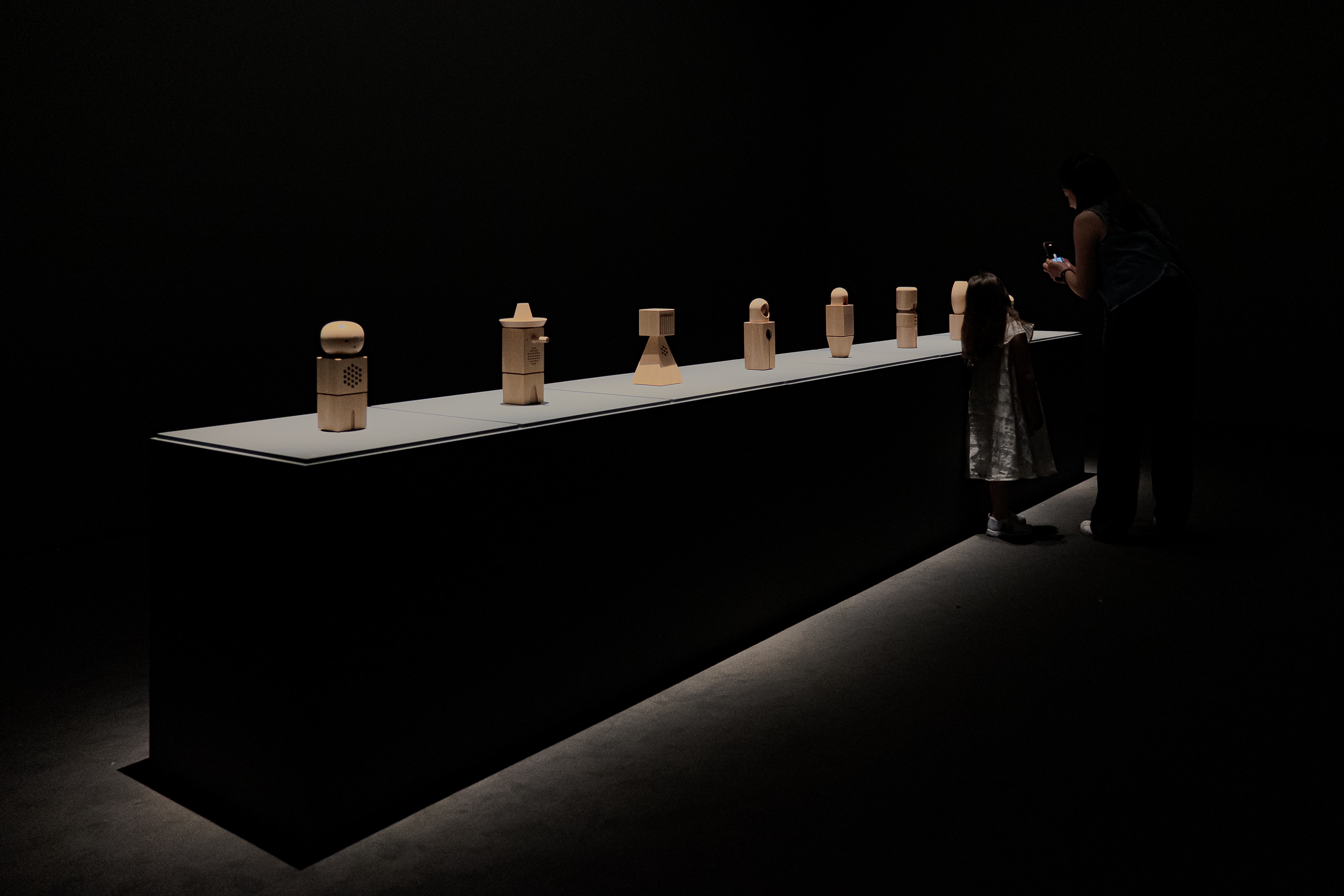 Leica CL · 18mm · f/2.8 · 1/50 ·
ISO 6400
Leica CL · 18mm · f/2.8 · 1/50 ·
ISO 6400
They are based on the Choir installation that Teenage Engineering made with Absolut Vodka more than a decade ago.
This refined version is a fully modular set of individual characters that unite to sing songs together.
 Leica CL · 18mm · f/2.8 · 1/50 ·
ISO 2000
Leica CL · 18mm · f/2.8 · 1/50 ·
ISO 2000
A bench, again an instance of the Field Desk system, offered a place for visitors to rest and listen to the singing dolls.
Listening room
A surprisingly enjoyable part of the exhibition is the listening room, titled HiFi Pursuit Listening Room Dream No. 2. It is a sound-treated space with three massive speakers at the front. To the left is an equally large set of amplifiers and other hi-fi equipment powering the whole setup.
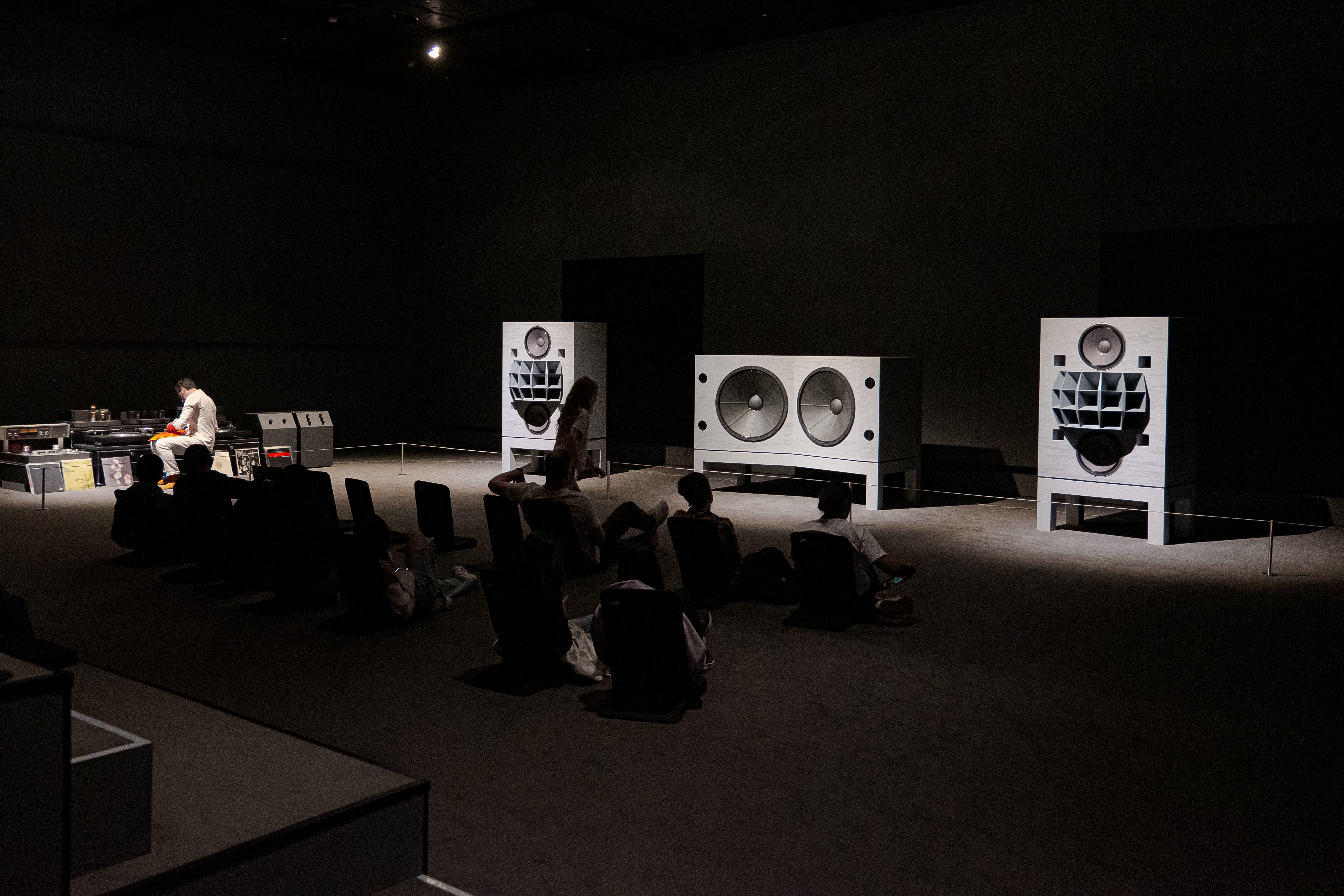 Leica CL · 18mm · f/2.8 · 1/50 ·
ISO 6400
Leica CL · 18mm · f/2.8 · 1/50 ·
ISO 6400
It is the work of OJAS (the creative name for Devon Turnbull). He has worked with other museums and galleries in the past to put together similar listening rooms.
In front of the speakers are many rows of seats.
I was fortunate enough to be there when curator Joseph Becker was playing items from Gary Hustwit’s collection. I had the chance to experience Steve Reich’s Six Pianos in a way I never have before.
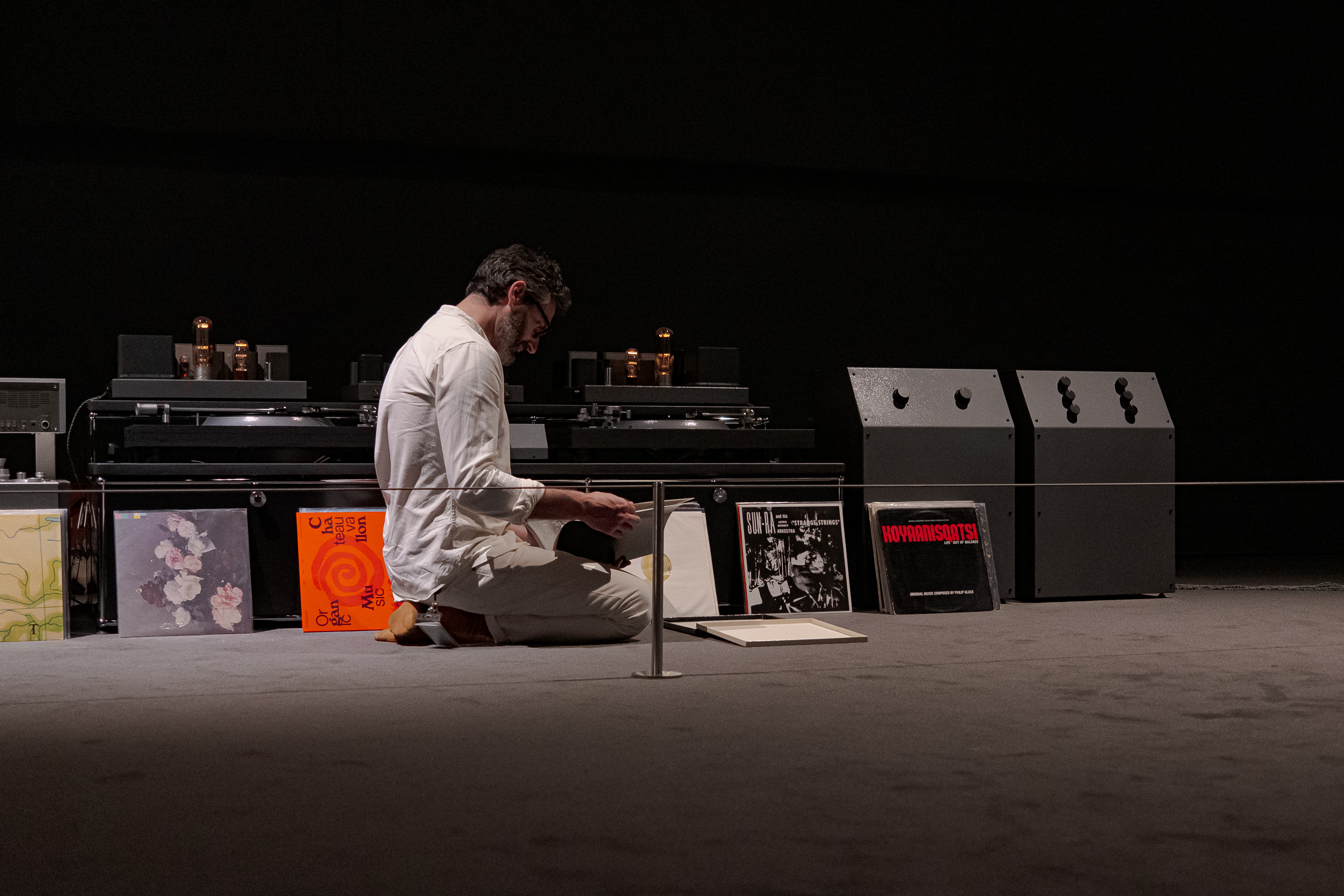 Leica CL · 28mm · f/2.8 · 1/80 ·
ISO 6400
Leica CL · 28mm · f/2.8 · 1/80 ·
ISO 6400
Takeaways
I hope that you can to visit this exhibition. Not only does it touch on an art form at the core of humanity — music, it also presents some of the greatest graphic design and industrial design in all of history.
I came away admiring the staying power that technology has when it relates to something core to humanity like music. Other forms of technology like PDAs and old computers are ignored by all but historians and collectors. Yet, music players like Walkmans and iPods continue to live on.
Thanks to Q for reading drafts of this.
